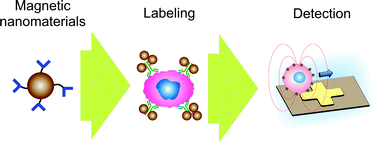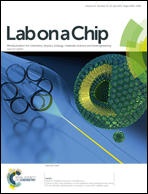Magnetic sensing technology for molecular analyses
Abstract
Magnetic biosensors, based on nanomaterials and miniature electronics, have emerged as a powerful diagnostic platform. Benefiting from the inherently negligible magnetic background of biological objects, magnetic detection is highly selective even in complex biological media. The sensing thus requires minimal sample purification and yet achieves a high signal-to-background contrast. Moreover, magnetic sensors are also well-suited for miniaturization to match the size of biological targets, which enables sensitive detection of rare cells and small amounts of molecular markers. We herein summarize recent advances in magnetic sensing technologies, with an emphasis on clinical applications in point-of-care settings. Key components of sensors, including magnetic nanomaterials, labeling strategies and magnetometry, are reviewed.


 Please wait while we load your content...
Please wait while we load your content...